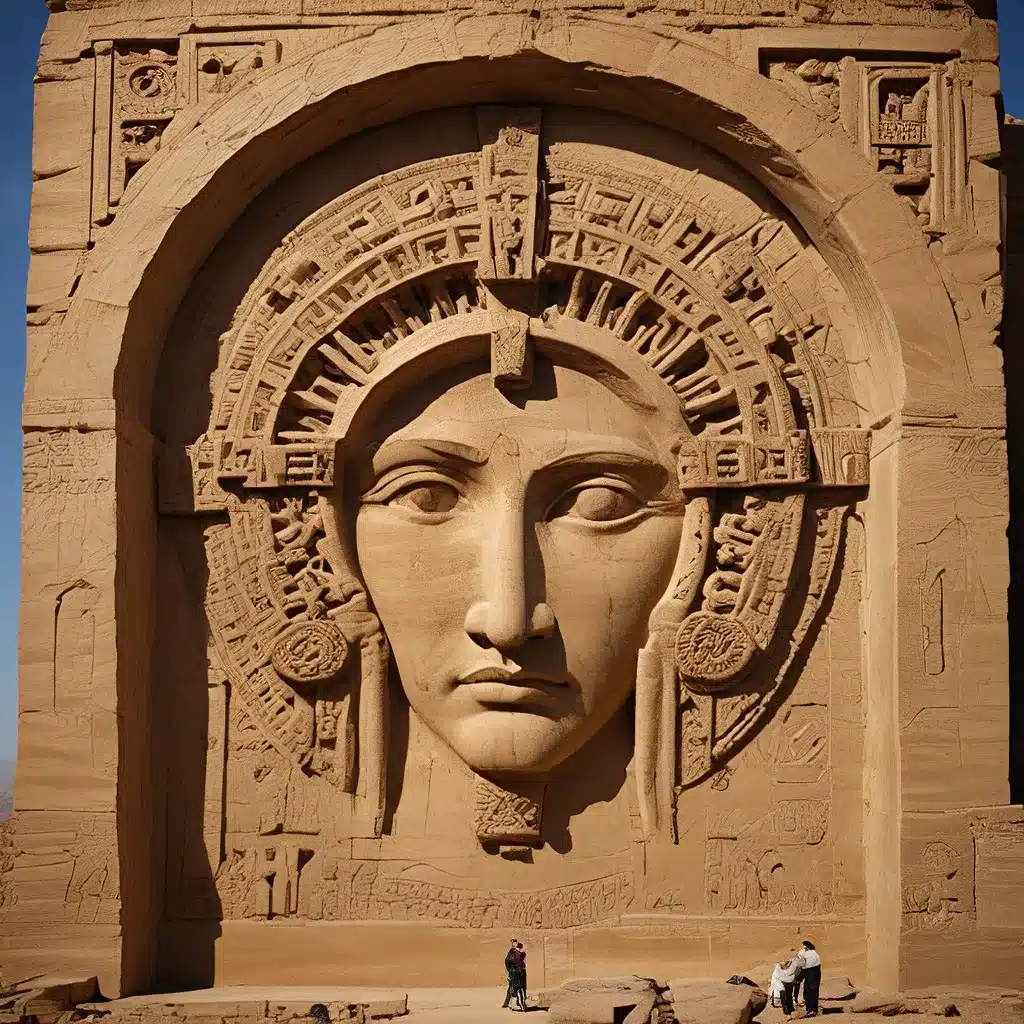
Humanity’s fascination with the monumental achievements of ancient civilizations has long captivated our collective imagination. From the towering pyramids of Egypt to the mysterious Nazca lines of Peru, these architectural and engineering marvels continue to baffle modern scholars, archaeologists, and enthusiasts alike. As we delve deeper into the past, uncovering new discoveries and reexamining long-held beliefs, the mysteries of these ancient wonders only seem to deepen.
The Enduring Allure of the Pyramids
The iconic pyramids of Giza have been the subject of intense study and speculation for centuries. These colossal structures, built with remarkable precision and engineering prowess, have long been considered one of the most remarkable feats of human accomplishment. However, the exact methods and technologies employed by the ancient Egyptians in their construction remain elusive, sparking ongoing debates and theories among researchers.
Recent archaeological discoveries and advancements in 3D modeling and scanning technologies have shed new light on the construction techniques used by the ancient Egyptians. Scholars now have a better understanding of the intricate planning, logistical coordination, and skilled craftsmanship required to erect these massive monuments. The use of advanced ramp systems, precise stone-cutting, and the coordination of thousands of workers have been meticulously documented, providing a more nuanced understanding of this ancient engineering marvel.
Decoding the Mysteries of Nazca
While the pyramids of Giza have captured the world’s attention for millennia, the Nazca lines of Peru present an equally intriguing and perplexing archaeological enigma. These vast geoglyphs, sprawling across the Peruvian desert, depict a wide range of figures, from geometric shapes to lifelike representations of animals and plants. The sheer scale and complexity of these ancient designs have long baffled researchers, leading to a proliferation of theories and speculation about their purpose and origin.
Recent advancements in aerial photography and satellite imaging have allowed scholars to gain a better understanding of the Nazca lines, revealing their striking complexity and intricate design. Researchers have identified a number of distinct patterns and motifs, suggesting that these geoglyphs may have served as a sophisticated communication system, a celestial calendar, or even a sacred landscape for rituals and religious practices.
Intriguingly, the Nazca lines have also been linked to the mysterious Nazca culture, whose rise and decline remain shrouded in mystery. The engineering and artistic prowess displayed in the creation of these monumental works have led many to believe that the Nazca people possessed a deep understanding of their environment and a remarkable level of technological and cultural sophistication.
Uncovering the Secrets of Göbekli Tepe
While the pyramids and Nazca lines have long captured the public’s imagination, the recent discovery of Göbekli Tepe in Turkey has been hailed as one of the most significant archaeological finds of the 21st century. This ancient ritual site, dating back to the Neolithic period, predates the construction of the Egyptian pyramids by thousands of years and challenges our understanding of the development of human civilization.
The massive, T-shaped stone pillars erected at Göbekli Tepe, some standing up to 20 feet tall, are a testament to the impressive engineering and organizational capabilities of the site’s builders. The intricate carvings and reliefs adorning the pillars suggest a highly sophisticated religious or ritual system, defying the commonly held belief that early human societies were primarily hunter-gatherers.
As researchers continue to unravel the mysteries of Göbekli Tepe, they have uncovered evidence of a complex social structure, advanced stone-working techniques, and a level of architectural planning that challenges our understanding of the Neolithic period. The sheer scale and complexity of this ancient site have led some scholars to propose that it may have been a proto-urban center, predating the development of the first cities by thousands of years.
Emerging Theories and Ongoing Discoveries
The continued exploration and study of ancient engineering marvels have given rise to a wealth of new theories and perspectives. As researchers delve deeper into the past, they are uncovering evidence that challenges long-held assumptions and opens up new avenues of inquiry.
One such emerging theory is the possibility that ancient civilizations may have possessed a more advanced understanding of astronomy and celestial phenomena than previously believed. The precise alignment of the pyramids, the intricate designs of the Nazca lines, and the orientation of Göbekli Tepe’s monumental structures have led some scholars to suggest that these ancient cultures may have had a more sophisticated knowledge of the cosmos and the movements of celestial bodies.
Advancements in technology, such as high-resolution satellite imagery, ground-penetrating radar, and 3D modeling, have also played a crucial role in unraveling the mysteries of these ancient sites. These tools have allowed researchers to map and analyze the structures in unprecedented detail, revealing new insights into the engineering techniques, construction methods, and the overall organization and planning that went into these monumental projects.
As we continue to explore and study these ancient engineering marvels, the possibilities for new discoveries and reinterpretations of the past remain vast and exciting. The enduring allure of these sites lies not only in their sheer scale and complexity but also in their ability to challenge our understanding of human history and the remarkable capabilities of our ancestors.


